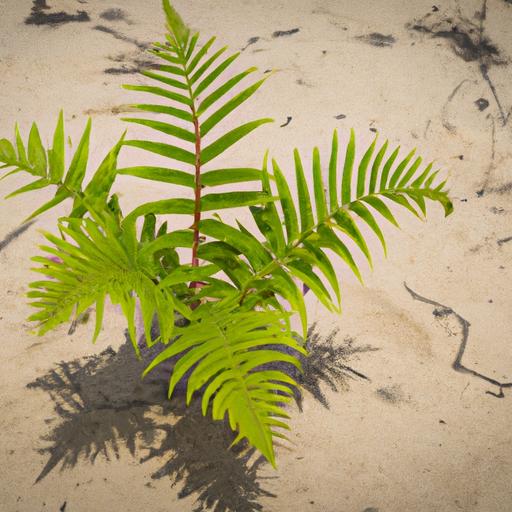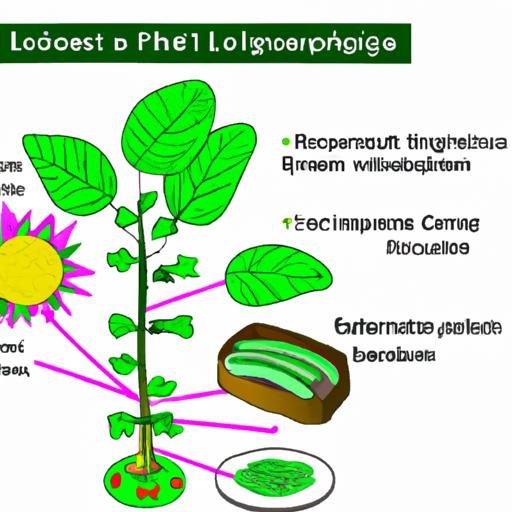Plants, the vibrant green wonders that adorn our surroundings, bring life and beauty to our homes and gardens. They provide us with clean air, a sense of calm, and a connection to nature. However, even the most seasoned plant enthusiasts can encounter a common problem: the dreaded yellowing of plants. It’s a sight that can send shivers down any green thumb’s spine. But fear not! In this article, we will delve into the causes of yellowing plants, how to diagnose the issue, and most importantly, how to remedy and prevent this worrisome phenomenon.
As plant lovers, we understand the significance of maintaining their health and vitality. Just like humans, plants require proper care and attention to thrive. The color of their leaves is a vital sign of their well-being. When leaves turn yellow, it’s an indication that something is amiss. But what exactly causes this disheartening transformation?
Nutrient deficiencies often play a significant role in the yellowing of plants. Insufficient levels of essential nutrients such as nitrogen, iron, and magnesium can lead to pale and yellow leaves. These nutrients are vital for a plant’s growth and development, and when they are lacking, the plant can’t perform at its best.
Another common culprit behind yellowing plants is improper watering. Overwatering or underwatering can disrupt the delicate balance of moisture within the plant, affecting its ability to absorb nutrients properly. Similarly, pests and diseases can wreak havoc on your beloved plants, causing yellowing leaves as a visible symptom of their presence.
Now that we understand the causes, it’s time to learn how to diagnose yellowing plants. By closely examining the visual cues and conducting soil tests, we can determine if the issue lies in nutrient deficiencies or if pests and diseases are to blame. Armed with this knowledge, we can then proceed to the next crucial step: finding remedies to restore our plants’ health.
Remember, when plants turn yellow, it’s not the end of the world. With the right approach and care, we can nurse them back to their vibrant selves. In the upcoming sections, we will explore various remedies, ranging from adjusting nutrient levels through proper fertilization techniques to implementing organic alternatives. We will also delve into the importance of proper watering practices and effective pest and disease control methods.
Stay tuned as we uncover the secrets to preventing yellowing plants and maintaining their optimal health. Together, we can ensure our plants thrive, radiating their natural beauty and bringing joy to our lives. So, let’s embark on this green journey and discover the wonders of nurturing our leafy companions back to their glory!
Next Section: Understanding the Causes of Yellowing Plants
Understanding the Causes of Yellowing Plants
As we embark on our quest to revive our yellowing plants, it’s essential to understand the underlying causes. By identifying the root of the problem, we can implement targeted solutions to restore our plants’ vitality. Let’s explore the main factors contributing to yellowing plants:
A. Nutrient deficiencies
-
Lack of nitrogen: Nitrogen is a key element in chlorophyll production, responsible for the vibrant green color of leaves. When plants lack nitrogen, their leaves turn yellow, indicating a deficiency. Nitrogen deficiency often occurs in plants grown in nutrient-depleted soil or as a result of inadequate fertilization.
-
Insufficient iron levels: Iron is essential for the synthesis of chlorophyll, enabling plants to capture sunlight and convert it into energy. When plants lack iron, they struggle to produce sufficient chlorophyll, resulting in yellowing leaves with green veins. This condition, known as iron chlorosis, is commonly seen in plants growing in alkaline soils with high pH levels.
-
Magnesium deficiency: Magnesium is a crucial component of chlorophyll molecules, playing a vital role in photosynthesis. When plants lack magnesium, they exhibit yellowing leaves with green veins, similar to iron deficiency. This condition, known as magnesium chlorosis, can arise from magnesium-deficient soils or imbalances in soil pH.
B. Overwatering or underwatering
Maintaining the right balance of moisture is crucial for healthy plant growth. Overwatering can suffocate the plant’s roots, leading to oxygen deprivation and nutrient deficiencies. As a result, plants may develop yellow leaves as a sign of stress and root damage. On the other hand, underwatering deprives plants of essential moisture, hindering their ability to absorb nutrients properly and causing leaf yellowing.
C. Pests and diseases
Pests and diseases can be relentless adversaries in our battle to keep plants healthy. Aphids, tiny sap-sucking insects, are notorious for their ability to weaken plants by feeding on their sap. This feeding activity can stunt growth and cause yellowing leaves. Fungal infections, such as powdery mildew or leaf spot, can also lead to yellowing leaves as the fungi disrupt the plant’s normal physiological processes.
Understanding the causes of yellowing plants is the first step towards nursing them back to health. By addressing nutrient deficiencies, adjusting watering practices, and implementing effective pest and disease control measures, we can restore our plants’ lush green foliage. Join me in the next section as we delve into diagnosing yellowing plants and uncovering the secrets to reviving our leafy companions.
Next Section: Diagnosing Yellowing Plants
Diagnosing Yellowing Plants
When your beloved plants start to turn yellow, it’s crucial to diagnose the underlying issue promptly. Proper diagnosis is essential to address the problem effectively and provide the necessary care. In this section, we will explore different methods to diagnose yellowing plants, enabling you to become a plant detective and identify the root cause.
A. Visual Cues and Examination
The first step in diagnosing yellowing plants is to closely observe the visual cues and examine the affected leaves. Take a closer look at the color, pattern, and location of the yellowing. Are the leaves uniformly yellow or only specific parts? Are there any spots, patches, or discoloration present? These visual cues can provide valuable insights into the potential causes.
Additionally, consider other factors such as wilting, curling, or stunted growth. These symptoms can indicate various issues, including nutrient deficiencies, pests, or diseases. By carefully examining these visual cues and noting any accompanying symptoms, you can narrow down the potential causes and move closer to an accurate diagnosis.
B. Soil Testing for Nutrient Deficiencies
One of the primary culprits behind yellowing plants is nutrient deficiencies. Soil testing can provide valuable information about the nutrient levels in your plant’s environment. Various home testing kits and professional services are available to analyze the soil composition and identify any deficiencies.
By conducting a soil test, you can determine if your plant lacks essential nutrients such as nitrogen, iron, or magnesium. These tests help you understand the specific deficiencies and allow you to take targeted action. With this knowledge in hand, you can adjust your fertilization routine or introduce specific supplements to restore the necessary nutrient balance and revive your yellowing plants.
C. Identifying Signs of Pests and Diseases
Pests and diseases can wreak havoc on your plants, causing yellowing leaves as a visible symptom of their presence. Identifying the signs of pests and diseases is crucial for effective diagnosis and treatment. Keep an eye out for common culprits like aphids, which can cause yellowing and distortion of leaves. Look for tiny insects, sticky residue, or distorted growth as signs of aphid infestation.
Fungal infections are another common cause of yellowing leaves. Look for signs of fungal growth, spots, or mold on the leaves. These fungal infections can inhibit nutrient absorption, leading to yellowing and overall decline in plant health. Identifying these signs allows you to take appropriate measures, such as applying natural or chemical treatments, to combat the pests or diseases and restore your plant’s vitality.
By closely observing visual cues, conducting soil tests, and identifying signs of pests and diseases, you can diagnose the causes behind your plant’s yellowing leaves. Armed with this knowledge, we can proceed to the next section, where we will explore effective remedies to bring back the vibrancy and health to your precious plants.
Next Section: Remedies for Yellowing Plants
Remedies for Yellowing Plants
Yellowing plants may seem like a cause for concern, but fear not! There are effective remedies available to restore their health and vibrant green color. Let’s explore some tried and tested methods to address this issue and bring our plants back to their former glory.
Adjusting Nutrient Levels
A. Fertilization Techniques
Proper fertilization is crucial for replenishing nutrient deficiencies in yellowing plants. Choose a high-quality fertilizer that suits the specific needs of your plants. Nitrogen-rich fertilizers can help combat yellowing caused by nitrogen deficiency, while iron additives can address iron deficiency. Follow the manufacturer’s instructions and apply the fertilizer as directed, ensuring it is evenly distributed around the plants’ root zone.
B. Organic Alternatives
For those who prefer a more natural approach, organic alternatives can provide effective solutions. Compost and organic matter can enrich the soil, supplying an array of essential nutrients. Mulching with organic materials can help retain moisture and prevent nutrient leaching. Organic fertilizers, such as fish emulsion or seaweed extracts, offer a gentle and eco-friendly option to replenish nutrient levels.
Proper Watering Practices
A. Finding the Right Balance
Proper watering practices are crucial in preventing yellowing caused by overwatering or underwatering. Before watering, check the moisture levels of the soil by inserting your finger about an inch deep into the soil. If it feels dry, it’s time to water. However, if it feels moist, hold off on watering to avoid waterlogging the roots. Strike a balance and ensure the soil is consistently moist but not overly saturated.
B. Techniques for Watering Plants
To ensure proper water distribution, water at the base of the plant, near the root zone. Avoid overhead watering, as it can lead to fungal diseases and water stress on the leaves. Drip irrigation systems or soaker hoses can provide a slow and steady water supply, allowing the roots to absorb moisture effectively. Remember, consistency is key when it comes to watering, so establish a regular watering schedule based on your plant’s needs and environmental conditions.
Pest and Disease Control
A. Natural Remedies
When pests and diseases are the culprits behind yellowing plants, natural remedies can effectively combat these issues. Beneficial insects, such as ladybugs and lacewings, can help control aphid infestations. Neem oil, a natural insecticide, can also be used to deter pests while being gentle on plants. Additionally, practicing good garden hygiene, such as removing infected leaves and debris, can help prevent the spread of diseases.
B. Chemical Treatments
In severe cases, chemical treatments may be necessary to combat persistent pests and diseases. Consult with a professional or your local garden center to identify the appropriate chemical treatments for your specific situation. Always follow the instructions carefully and use these treatments as a last resort, prioritizing the health and well-being of your plants and the surrounding environment.
By employing these remedies, we can address the underlying causes of yellowing plants and promote their recovery. Remember, prevention is key! Regularly monitoring your plants, implementing proper care practices, and providing optimal growing conditions will go a long way in maintaining their health and vitality.
Next Section: Preventing Yellowing of Plants




